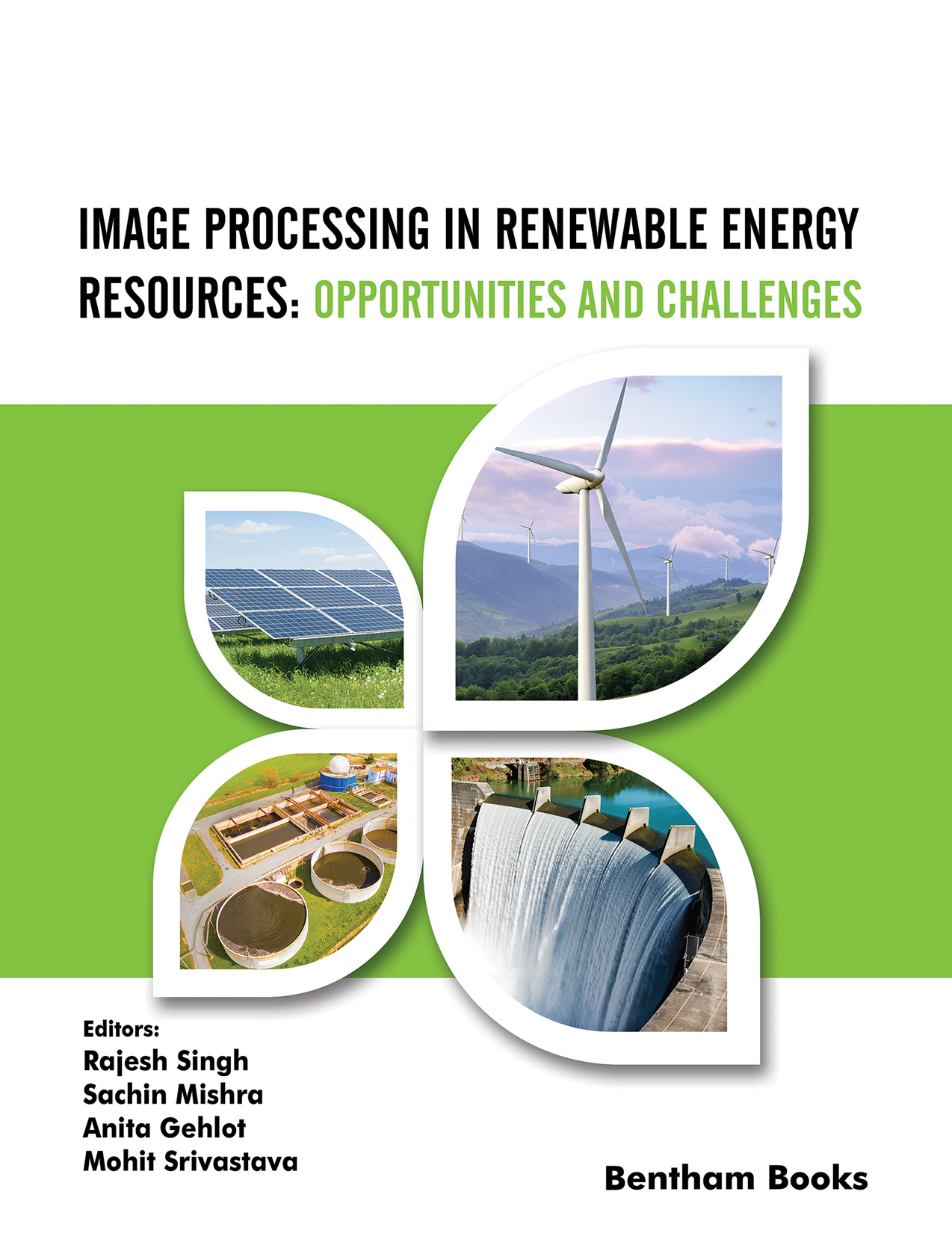Preface
The current book attempts to feature a portion of innovative work in the field of image processing applications to renewable energy systems. The chapters in the book describe the use of neural networks in multi-direction dynamic, topographical data frameworks in taking care of the distinctive contemporary issues managed under the space of environmentally friendly power.
This book is beneficial for the researchers to work and focus on the hybrid techniques of GIS, remote sensing, image processing, and its implementation on the setup and applications of renewable energy resources. Due to population growth and modernization, the demand and supply system is unbalanced, which directly affects the environmental condition. Hence, it is required to utilize natural resources wisely so that our demand can be fulfilled without harming the environment. The hybrid techniques are fast and provide financial benefits in terms of a site visit and its proper selection. Designers can plan the complete project virtually with its benefits and losses.
In Chapter 1, Dr. Goyal explains the different problems in rural electrification faced by electricity boards in India. In Chapter 2, Pawar et al. try to entice the effect of uncertainty in renewable energy planning and operation. In Chapter 3, computing techniques for the integration of different renewable energy resources are illustrated by Patel and Singal, the layout and configurations of the integrated renewable energy system are introduced, and various computing technologies that are used to evaluate the performance and sizing of the integrated renewable energy system are presented and discussed in detail. The automatic generation control of hydropower plants consisting of three areas was examined in Chapter 4, where an evolutionary algorithm called whale optimization algorithm (WOA) has been utilized for the automatic generation control (AGC) methodology. In Chapter 5, Chatterjee et al. illustrate the modelling of a traditional controller called proportional-integral-derivative controller for the automatic generation control in the system of a single area. In this, the PID controller has been used to control these systems by automatic generation control. In Chapter 6, Jain et al. analysed the fourteen segments of the Sabarmati riverfront from Subhash bridge to propose bridge 3 (Jamalpur flyover). Image processing software tools such as ArcGIS, QGIS, AutoCAD, Autodesk 3DS Max, Blender, City Engine 2019, ERDAS IMAGINE, Google Open Street Map have been utilized for calculating the sub-indexes and a methodology for conducting similar assessments using a variety of image processing tools has been demonstrated. Singh et al., in Chapter 7, estimated solar energy generation by installing a solar farm in the barren land. Various strategies have been designed for land use characterizations which are commonly known as supervised and unsupervised classification. Here, the supervised method of classification is used as a mode of classification. The land use/cover classification is done by using satellite images of 2000, 2009, 2014, and 2019 through ERDAS IMAGINE 2015 software. It was estimated that a huge amount of energy could be generated by the used solar energy by installing solar farms in the barren land as estimated by the above process. In Chapter 8, Kumar et al. analysed the temperature of the solar panel by thermal imaging camera and thermal image analysis. In this, a device has been proposed which can successfully optimize the utilization of the cooling system and increase the efficiency of the panel. Editors include Dr. Rajesh Singh (Professor, Lovely Professional University), Dr. Sachin Mishra (Associate Professor, Lovely Professional University), Dr. Anita Gehlot (Associate Professor, Lovely Professional University), and Dr. Mohit Srivastava (Professor, Chandigarh Engineering College).
Rajesh Singh
Uttaranchal University
Dehradun
India
Sachin Mishra
Lovely Professional University
Phagwara, Punjab
India
Anita Gehlot
Uttaranchal University
Dehradun
India
&
Mohit Srivastava
Chandigarh Engineering College
Mohali, Punjab
India

